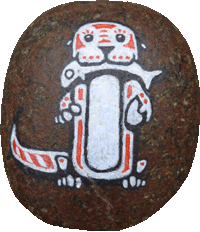4th March 2011
Perup is quite a special nature reserve, as it is home to a number of rare species that are no longer found over most of the rest of Australia. Although habitat destruction is a major cause of decline like everywhere else in the world, here it is the unchecked spread of invasive species like foxes and cats that has decimated the local marsupials. Some of the iconic fellas like the big red kangaroo, the bushtail possum and the koala are tough enough to take care of themselves, but Australia is/was home to hundreds of species of hopping, scurrying, clambering and burrowing marsupials that are all smaller than a fox and easy prey.
So Perup now has some of the only mainland populations of the numbat, woylie, quenda, chuditch and tammar left in Australia. Some of these species are actually recovering here as well, due to the success of the 1080 fox poisoning program; the poison is brewed from a native plant that indigenous animals are immune to.
I do wish that I could show you some photos of numbats, woylies, quenda and chuditch but we’re experiencing some difficulty in finding them. They’re all small, they’re all rare, they’re all nocturnal, and they’re all nervous and shy. Actually, the numbat comes out in the day but the other points remain true; the current estimate is one squirrel-sized numbat per 50 hectares.
I can and will show you a photo of a tammar wallaby, because those we have seen. We’ve got one more day here tomorrow, wish us luck.
Related Images:













































